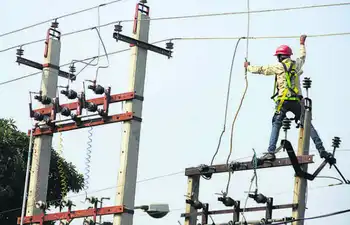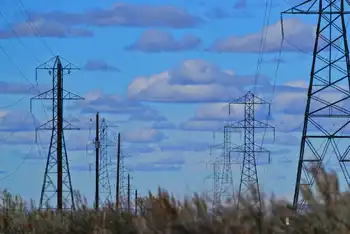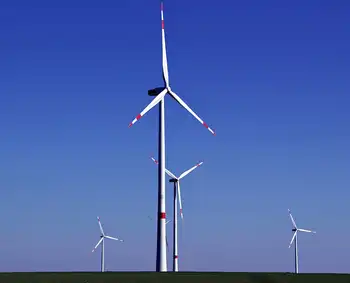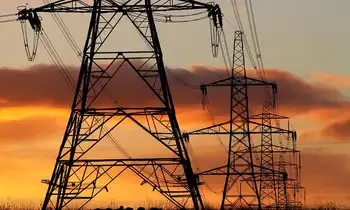Kansas transmission line project back in mix
By Associated Press
Arc Flash Training CSA Z462 - Electrical Safety Essentials
Our customized live online or in‑person group training can be delivered to your staff at your location.

- Live Online
- 6 hours Instructor-led
- Group Training Available
The board of the Southwest Power Pool board, which oversees the energy transmission grid in nine states, voted to put the project back on its priority list during a meeting held in Tulsa, Okla.
A strategic planning committee earlier this month removed the project, attracting concern from Kansas leaders who worried such a delay could endanger the state's fledgling wind energy industry.
The proposed $653 million line would run in a V-shape from Spearville and Wichita to Commanche at the Oklahoma border and then down to a substation near Woodward, Okla. It would be designed to accommodate 765-kilovolt transmission lines, the first west of the Mississippi River. Currently, the highest voltage line in Kansas is 345 kilovolts and the system would initially run at that capacity.
Following additional study and engineering work, the board and a committee of state regulators are scheduled to consider approving the projects for construction in January.
Supporters, including Kansas Gov. Mark Parkinson, believe the Kansas project is necessary for the future growth of wind farms in the state. The high-voltage lines would make it possible to move the excess electricity generated by wind farms to customers outside the state.
Upon hearing that the project had been dropped, Parkinson sent a letter to the Power Pool board, asking for it to reconsider.
"While I understand the need for thorough study, the benefits of this project have been well-documented and it has ranked high on the SPP priority project list for some time," Parkinson wrote. "With Congress considering a national renewable energy standard, I am concerned that any delay in this project may restrict our entire region's ability to provide an important energy source to the nation."
After the board's decision, Parkinson said he was "encouraged" and looked forward to the project being approved in January.
Earlier this year, Parkinson and the Kansas Corporation Commission helped broker a deal allowing two companies competing to build the ultra high-voltage line in Kansas to cooperate on it instead.
Prairie Wind Transmission LLC, which involves Topeka-based Westar Energy Inc., would build a section from Wichita to Medicine Lodge and then to the Oklahoma border, where it would connect to that state's ultra high-voltage line.
ITC Great Plains, a Topeka-based subsidiary of a Michigan transmission company, would build the section from Spearville, near Dodge City, to Medicine Lodge.
The ultra high-voltage line will allow for more electricity to be carried — which means less energy loss in transmission — and allow for additional electrical power to move from the additional wind farms that will be built in western Kansas.
The other four projects include a $237 million high capacity line from Guyman, Okla., to Woodward; a $131 million high capacity line from Valliant, Okla., to Texarkana on the Texas-Arkansas line; a $842,000 138-kilovolt reactor in Tulsa; and a $278 million high capacity line from Cooper, Neb., to Sibley, Mo.
Although the Power Pool board voted to put the project back in, the decision was not unanimous. Some members worried they were simply reacting to the uproar generated by the shorter list. They also said the group should do more study on whether there would be enough wind energy generated to warrant the 765-kilovolt lines.
Board members also are figuring out how electric utilities across the region will pay for the upgrades.
The Power Pool board oversees energy transmission in all or parts of Kansas, Oklahoma, Nebraska, Arkansas, Missouri, Texas, New Mexico, Louisiana and Mississippi.











